Basics of Files in Windows (and other OS too)
- Some of this is from Chapter of Office Fundamentals and File Management.
- Page 64 of the book
- A file is a named collection of data stored on a disk.
- A user will have many many files
- A folder or directory is a structure used to organize files on a disk.
- Folders should be used to group like data.
- Wherever you work, you should create a main folder for our class (CSCI 104 Fall 2016)
- You should create four sub folders
- Word
- Excel
- PowerPoint
- Other
- In each of these, we will place the data files for each chapter.
- In windows, the primary Method for accessing folders is the File Explorer
- The ICON to start the File Explorer is in the lower left hand of the screen.
-
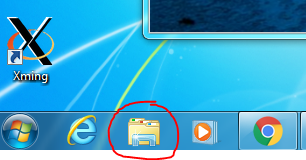
- But other things will start this as well.
- For example, saving a file in most applications.
- This display changes over the years but right now
-
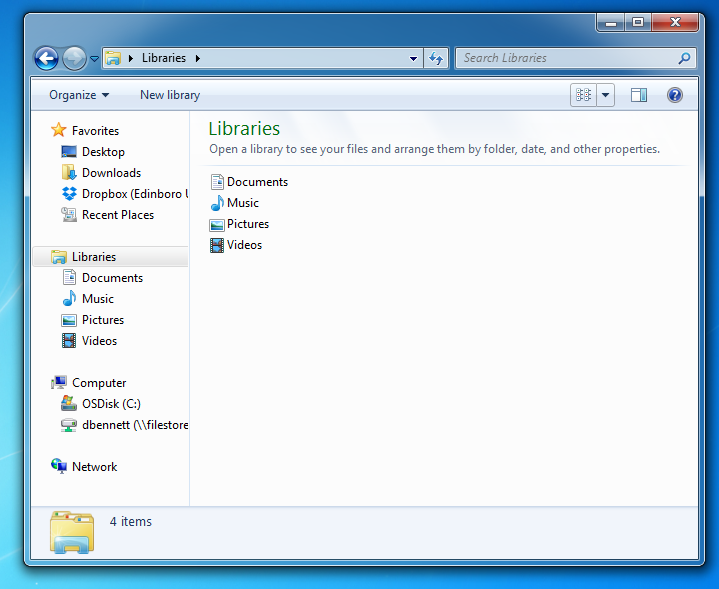
- The Navigation Pane is on the left and shows
-
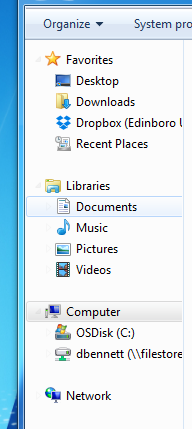
- Favorites or commonly used locations.
- Libraries or folders Windows wants you to use.
- Computer or devices connected to the computer.
- Network locations.
- The Address bar along with the highlighted section in the navigation pane shows the current working folder.
- The Content pane shows the folders and files in the current directory.
- This next part is important
- When working with a file system, it is important to keep track of the working directory.
- When you save something, some times Windows wants to put it where it "thinks" it should go, not where you want it.
- The key to not losing files is to make sure you know where you put things.
- The key to this is paying attention.
- Know where you are putting your files.
-

- The change view Button and drop down allow you to change the view in the content pane.
- Mess with this for a second.
- The Details option is useful more information about the files and folders.
- Clicking in the title boxes at the top allows for sorting by that field.
-
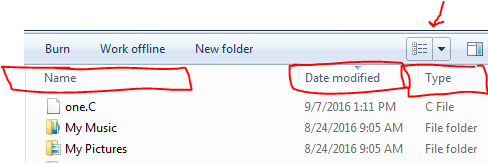
- In this picture, I have sorted by date, descending. Click the date bar again to sort by date ascending.
- Finding Files
- The search box in the file explorer allows you to search for a file by name.
-

- In this case, I searched my machine for one.C
- And it found it on the L: drive.
- I find the Navigation Pane to be nicely constructed
- Using the Expand/Collapse triangles, you can explore deeply nested folders easily.
- You can drag and drop items on this pane to move them between folders.
- We will do this later.
-
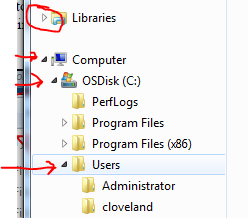
- Notice here the Libraries item is collapsed, so we do not see the contents.
- The Computer, OSDisk(C:) and Users folders are expanded so the contents are displayed.
- The Computer contains the OSDisk, which contains Users
- Making folders
- Folders can be constructed anywhere
- Simply navigate to where you wish to construct a folder
- Then click on New Folder on the Ribbon
- Type in the folder name in the box.
-
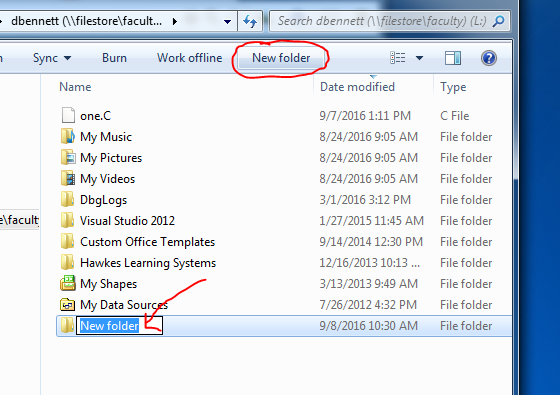
- Renaming files and folders
- Right click on the name.
- Select Rename from the drop down menu
-

- Type in the new name.









